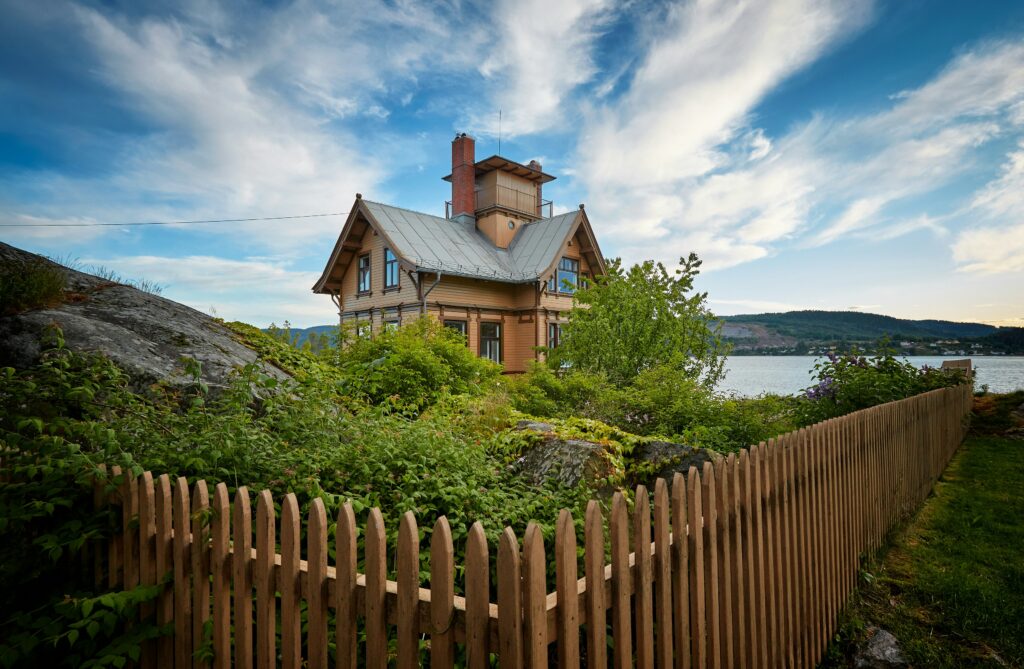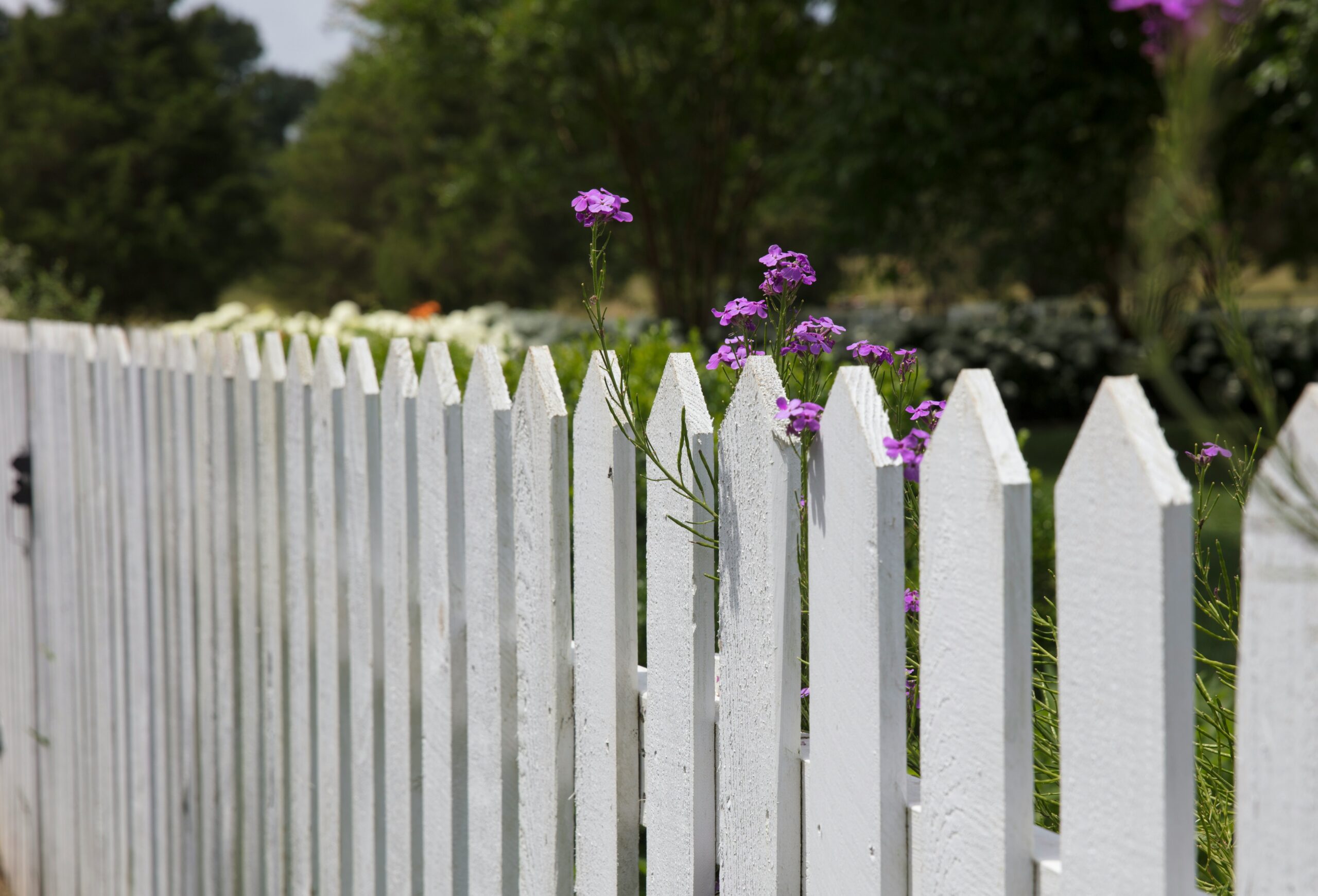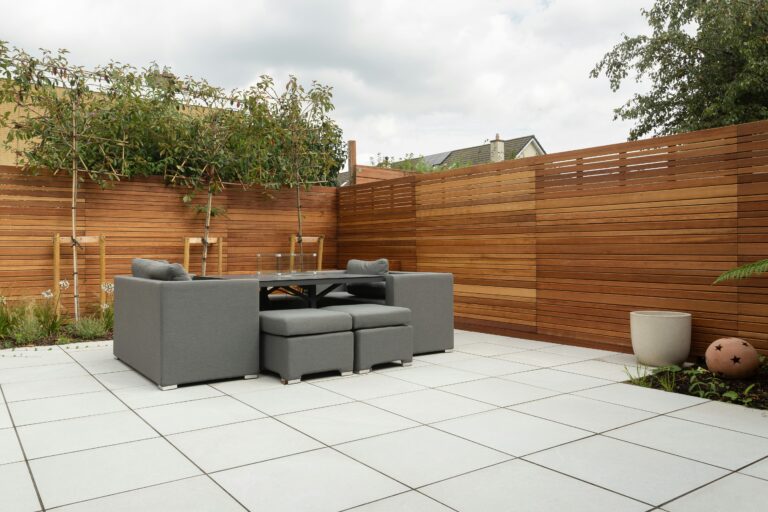Fencing Options Compared: Privacy, Aesthetics, and Cost
Choosing the right fence for your home isn’t just about marking property lines — it’s about enhancing privacy, boosting curb appeal, and supporting your overall outdoor & landscaping goals.
With so many fencing materials, styles, and price points available, it’s important to understand how each option compares in terms of functionality and appearance.
Whether you’re looking to keep pets in, nosy neighbors out, or simply give your yard a polished look, this guide breaks down the most popular fencing types.
We’ll compare their privacy levels, visual appeal, maintenance needs, and cost — so you can find the perfect fit for your space and budget.
Why Fencing Matters in Outdoor & Landscaping Design
A fence is more than just a boundary. In modern outdoor & landscaping design, fencing plays a key role in shaping how your yard looks, feels, and functions. A well-chosen fence can:
- Provide privacy: Block views from neighbors or the street
- Enhance safety: Keep kids and pets secure
- Boost curb appeal: Frame your property with style
- Reduce noise: Act as a barrier from traffic or neighbors
- Define spaces: Separate garden areas, patios, or pools
Because fencing is both a visual and functional feature, choosing the right type is a smart investment in your home’s value and outdoor lifestyle.
Wood Fencing: Classic Charm and Versatility
Wood fences are one of the most popular choices in residential areas thanks to their timeless appearance and adaptability. Available in styles like picket, privacy, lattice, and ranch rail, wood works well with nearly any outdoor & landscaping aesthetic.
Pros:
- Warm, natural look that blends with most landscapes
- Can be painted or stained to match your style
- Offers full or partial privacy depending on design
- Customizable height and layout
Cons:
- Requires regular maintenance (sealing, staining, repairs)
- Can rot, warp, or attract insects if untreated
- Shorter lifespan compared to some modern materials
Cost: Moderate — typically $15–$35 per linear foot (installed), depending on wood type and fence height.

Vinyl Fencing: Low Maintenance and Clean Appearance
Vinyl fencing is a sleek and durable alternative to wood. It’s often chosen for its clean look and minimal upkeep, making it a popular option in suburban outdoor & landscaping designs.
Pros:
- Won’t rot, warp, or splinter
- No painting or staining required
- Available in privacy, picket, and decorative styles
- Long-lasting and weather-resistant
Cons:
- Higher upfront cost than wood
- Less natural-looking (though newer options mimic wood grain)
- Can crack in extremely cold weather
Cost: Moderate to high — around $25–$40 per linear foot (installed), depending on style and quality.

Chain-Link Fencing: Budget-Friendly and Functional
Chain-link fencing may not win any beauty contests, but it’s one of the most cost-effective solutions for securing your yard. It’s widely used in both residential and commercial settings for its durability and affordability.
Pros:
- Low cost and fast installation
- Long-lasting and rust-resistant when coated
- Great for pet containment and large areas
- Can be topped with privacy slats or climbing plants
Cons:
- Offers little to no privacy without modifications
- Industrial appearance may not suit all homes
- Limited style options
Cost: Low — around $10–$20 per linear foot (installed).

Metal Fencing: Decorative and Durable
Wrought iron, aluminum, and steel fences bring elegance and strength to outdoor & landscaping designs. These fences are often used for front yards, gardens, or properties that prioritize visual appeal and security.
Pros:
- Highly durable and weather-resistant
- Offers a classic or modern ornamental look
- Customizable with decorative scrolls or finials
- Aluminum options are lightweight and rustproof
Cons:
- Less privacy than solid fence types
- Wrought iron can be heavy and prone to rust if not maintained
- Higher installation cost due to material and labor
Cost: High — between $30–$60 per linear foot (installed), depending on material and customization.

Composite Fencing: Eco-Friendly and Stylish
Composite fencing combines recycled wood fibers and plastic to create a durable, low-maintenance alternative to traditional wood. It’s gaining popularity among eco-conscious homeowners who want the look of wood without the upkeep.
Pros:
- Resistant to rot, pests, and fading
- Long-lasting with little maintenance
- Offers excellent privacy and noise reduction
- Often made from recycled materials
Cons:
- One of the more expensive fencing options
- Limited color and texture options compared to wood
- Heavier and may require professional installation
Cost: High — typically $35–$60 per linear foot (installed).
Bamboo and Living Fences: Natural and Unique Options
If you’re looking for a more organic or creative fencing solution, bamboo and living fences can add charm and personality to your outdoor & landscaping.
Bamboo Fencing
- Quick-growing and sustainable
- Ideal for tropical or Asian-inspired landscapes
- Provides moderate privacy
- Needs sealing to protect from weather and pests
Cost: Moderate — around $20–$30 per linear foot (installed).
Living Fences (Hedges and Shrubs)
- Beautiful and environmentally friendly
- Improves air quality and supports biodiversity
- Requires regular pruning and care
- Slower to establish than built fences
Cost: Varies — initial planting is affordable, but maintenance adds up over time.

Comparing Fencing Types at a Glance
| Fencing Type | Privacy | Aesthetics | Maintenance | Cost (Per Linear Foot) |
|---|---|---|---|---|
| Wood | High | Classic/Natural | Moderate to High | $15–$35 |
| Vinyl | High | Clean/Modern | Low | $25–$40 |
| Chain-Link | Low | Industrial | Low | $10–$20 |
Which Fence Will You Build?
When it comes to improving your outdoor & landscaping game with fencing, there’s really no right or wrong answer. Ultimately, the right fencing option depends on your property, your tastes, and your budget.
Installing a fence on your property improves your home’s value, makes your property more private, and helps you protect your space.
All this begs the question: Which kind of fence will you build?
Looking for more outdoor & landscaping tips to uplevel your property? Learn how to create stunning outdoor spaces.



